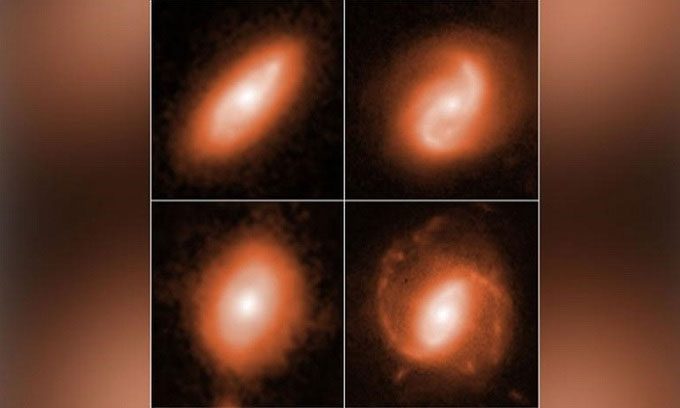Scientists Identify the Locations of Several Fast Radio Bursts with the Help of the Hubble Space Telescope.
The cause of fast radio bursts (FRBs), which last for a few milliseconds in the universe, has puzzled researchers since the phenomenon was first discovered in 2007. Due to their rapid flashes, FRBs are challenging to track and study. Understanding more about the origins of these powerful and bright bursts could help scientists gain deeper insights into what creates them.

Hubble Telescope captures images of galaxies with bursts. (Photo: CNN).
An international team of astronomers has traced the locations of 8 fast radio bursts. Although they have not yet concluded the origins of 3 of these bursts, the researchers utilized Hubble’s deep-space imaging equipment to identify the distant galaxies from which the bursts originated, including their precise locations within those galaxies. The findings will be published in the journal Astrophysical Journal.
Five bursts originated from spiral galaxies. This is the most common type of galaxy in the universe, and the Milky Way is also classified as such. A characteristic of spiral galaxies is their spiral arms where stars are formed. The locations of the fast radio bursts are situated along the arms of various spiral galaxies, ranging from approximately 400 million to 9 billion light-years away from Earth.
Despite their brief appearance, each FRB emits more energy than the Sun produces in a year. Researchers have detected over 1,000 bursts since 2017, but they have only traced the origins of 15 of them. These bursts come from massive, young galaxies located far away. Astronomers were able to pinpoint the locations of the FRBs in this new study by combining visible light, ultraviolet, and near-infrared imaging.
“This is the first high-resolution image of a cluster of FRBs“, said team leader Alexandra Mannings, a graduate student in astronomy and astrophysics at the University of California, Santa Cruz. “Most of the galaxies are massive, relatively young, and still forming stars. The images allow us to better understand the characteristics of the host galaxies, such as their mass and star formation rates, as well as explore what is happening at the locations of the FRBs.”
The team of experts was surprised to discover that the bursts originated from spiral arms, according to co-author Wen-fai Fong, an assistant professor of physics and astronomy at the Weinberg College of Arts and Sciences at Northwestern University in Illinois. Since spiral arms are indicative of star formation, this provides important clues that FRBs are related to the star formation process.
The new discovery suggests that the stars associated with the emergence of the bursts cannot be too young or too old. Previously, researchers speculated that FRBs might originate from young star explosions or the merging of neutron stars. Neutron stars are the extremely dense remnants left after a star explodes. They are also a source of gamma-ray bursts.





















































